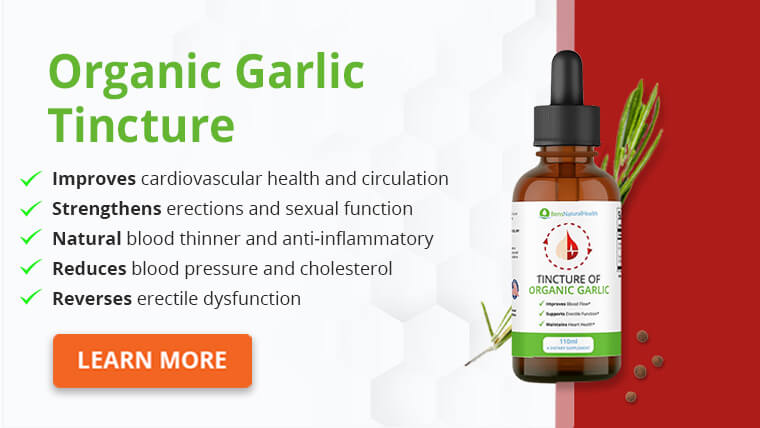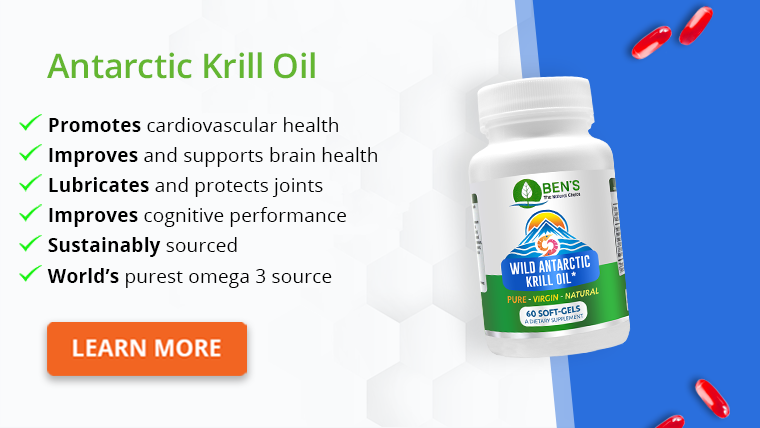If you’re at risk of having a heart attack or stroke, or you’ve already experienced one, your healthcare provider will likely recommend a medication to help reduce your risk of having one in the future.
Brilinta is one of many different medications prescribed to help reduce your risk of having a major cardiovascular event, which includes heart attack and stroke.
If you’ve been prescribed Brilinta, you might be wondering if there are any foods you need to avoid while taking it.
We’ll review a basic heart-healthy diet with specific recommendations while you’re taking Brilinta in this article!
What is Brilinta (Ticagrelor)?
Brilinta is the brand name for ticagrelor, a prescription medication used to help reduce the risk of stroke, heart attack, and other cardiovascular-related problems.
Brilinta is an antiplatelet medication, which means it helps platelets not stick together as easily, which could form a life-threatening clot.
It was approved by the United States Food and Drug Administration (FDA) in 2011 and is available in 60- and 90-milligram tablets.
Dosing of Brilinta varies from 90 milligrams twice daily to 60 milligrams twice daily, with an initial loading dose of 180 milligrams taken at once.
Heart attacks and strokes are caused by a blockage of blood flow in the arteries supplying blood to the heart and brain (respectively).
Blockages can occur as a result of plaque buildup in the arteries or from a blood clot.
Platelets are tiny disc-shaped cells found in your blood whose primary role is to form blood clots and slow/stop bleeding, allowing wounds to heal.
While this function is very important, it can become harmful if you’re at risk of forming dangerous blood clots that become lodged in the arteries of vital organs like your heart and brain.
When plaque dislodges (ruptures) and causes a blockage/heart attack, Brilinta can help reduce the risk of another heart attack by helping platelets not form another clot. Britlina helps reduce platelet activation and aggregation (sticking together).
Get Your FREE Diabetes Diet Plan
- 15 foods to naturally lower blood sugar levels
- 3 day sample meal plan
- Designed exclusively by our nutritionist
What is Brilinta used for?
Brilinta is meant for people who have already been hospitalized for a heart attack and is meant to reduce your risk of having another heart attack in the future.
It can also be used to help reduce your risk of having a major cardiovascular event if you’re at high risk, even if you haven’t had one in the past.
Some of the conditions Brilinta is prescribed for include:
- Previous heart attack
- Patients who have had a stroke or transient ischemic attack (TIA)
- Acute coronary syndrome (ACS) – any condition that causes a sudden reduction in or blockage of blood to your heart
- Patients with ACS who’ve had a stent placed
- Patients with coronary artery disease (CAD) with a high risk of a first heart attack or stroke
What are the side effects of Brilinta?
According to the manufacturer, some of the most common side effects while taking Brilinta are:
- Dizziness
- Nausea
- Diarrhea
- Slow heartbeat
- Rash
- Allergic reactions, including swelling of your face, throat, lips, tongue, hands, or feet
Brilinta can increase your risk of severe bleeding or bleeding that takes longer to stop.
Some of the warning signs of bleeding are:
- Severe bleeding or uncontrollable bleeding
- Pink, red, or brown urine
- Vomit that is bloody or looks like coffee grounds
- Red or black stool
- Coughing up blood or blood clots
If you develop any signs of severe bleeding, contact your healthcare provider or seek emergency medical care right away.
Foods to avoid while taking Brilinta
Grapefruit juice
Taking grapefruit or grapefruit juice with certain medications (including Brilinta) can block one of the enzymes needed to help clear Brilinta from your body, which could cause high levels of the drug to remain in your system.

Other than grapefruit, there aren’t any foods or drinks that will negatively interact with Brilinta.
Any foods to avoid listed here are simply heart-healthy diet recommendations that can be of benefit if you’re taking Brilinta.
Foods high in saturated fat
While artery blockages can occur due to blood clots, they can also form fatty plaque buildup, known as atherosclerosis.
This plaque buildup can build up and restrict blood flow and even block it, or it can break off and become dislodged in your artery and form a blockage.
Diets high in saturated fat can increase your risk of plaque buildup, which can put you at greater risk of having a heart attack or stroke.
Saturated fat is typically found in animal foods like high-fat meat and full-fat dairy products, but it can be found in some plant foods like coconut and palm oil.
Eating some saturated fat is fine, but you should aim to keep your total saturated fat intake to less than 10% of your total calories (less than 22 grams for a 2,000-calorie diet) if you’re taking Brilinta.
Some healthcare providers recommend keeping saturated fat below 5% of your total calories if you have risk factors for cardiovascular disease or have a history of CVD.
Here is a list of foods high in saturated fat to limit or avoid while taking Brilinta:
- Beef (especially non-lean cuts)
- Lamb
- Pork
- Poultry with the skin on
- Lard and cream
- Butter
- Cheese
- Ice cream
- Coconut (including coconut oil)
- Palm oil and palm kernel oil
- Some baked and fried foods (can be coated with butter, lard, etc. before cooking)
High-sodium foods
Having high blood pressure is a risk factor for cardiovascular disease (CVD or heart disease). High blood pressure puts more strain on your heart and can weaken the walls of your blood vessels over time.
A diet high in sodium can worsen high blood pressure. The more sodium you eat, the more fluid your body retains to try to offset the increase in sodium, which can increase your blood pressure.
Most people think of table salt as the primary source of sodium in their diets, but that’s usually not the case.
Processed foods and convenience foods are the most significant sources of sodium. Be sure to check the nutrition facts labels of foods you buy, and try to avoid or limit your portions of products with more than 20% of the daily value for sodium per serving.
In addition, eating more meals at home instead of eating fast food can help you cut down on your sodium intake.
Some common high-sodium foods to limit while on Brilinta are:
- Bread and rolls, including quick bread mixes (bread isn’t necessarily high in sodium per serving, but it can add up if you eat bread products with many meals and snacks)
- Pizza
- Sandwiches
- Cold cuts and cured meats
- Soups
- Burritos and tacos
- Savory snacks (pretzels, jerky, chips, etc.)
- Cheese
- Fast food and restaurant food
- Canned soups
- Certain condiments (soy sauce, salad dressings, etc.)

What foods should you eat while taking Brilinta?
Lean protein
Since saturated fat should ideally be limited while taking Brilinta, you might be wondering what type of protein you can eat that is considered heart-healthy.
Lean protein sources are those that provide a good source of protein without being high in fat – especially saturated fat.
Some lean protein sources to include while taking Brilinta are:
- Lean beef
- Skinless poultry
- Lean cuts of pork like tenderloin
- Eggs
- White meat fish like tuna, tilapia, and cod
- Beans and lentils
- Low-fat dairy
- Higher-protein grains/seeds like quinoa
Fruits and vegetables
A diet high in plant-based foods like fruits and vegetables is great for your heart (and overall health!) and may help reduce the buildup of plaque.
All fruits and vegetables have benefits, but some that are especially rich in beneficial nutrients include:
- Apples
- Bananas
- Berries (strawberries, raspberries, blackberries, blueberries)
- Dark green leafy vegetables like broccoli, Brussels sprouts, etc.
- Dark orange veggies like carrots, sweet potatoes, and pumpkin
Part of the reason fruits and vegetables are considered heart-healthy is because of their fiber content, which is why fresh and frozen produce is ideal. Fruit and vegetable juices don’t contain as much of (or any) of the beneficial fiber.
Omega-3 fatty acids
Omega-3 fatty acids can help prevent blood platelets from sticking together and forming blood clots.
You can get omega-3 fatty acids in your diet from certain types of fish as well as some plant sources.
Some of the best sources of omega-3s include:
- Oily fish like salmon, sardines, and mackerel
- Oysters
- Cod liver oil
- Walnuts
- Flaxseeds
- Chia seeds
If you want to supplement fish oil or omega-3, ask your healthcare provider since mega doses of omega-3s can interact with certain heart medications such as Brilinta.
| Eat | Avoid |
| Lean protein | Saturated fat |
| Foods rich in omega-3 fats | High-sodium foods |
| Fruits (fresh or frozen) | Grapefruit juice |
| Vegetables (fresh or frozen) | Excessive alcohol intake |
Other things to avoid while taking Brilinta
Alcohol
Some patients take Brilinta in addition to aspirin, another medication that can reduce the risk of blood clots.
If you drink excessive amounts of alcohol while taking these medications, it could increase your risk of forming stomach bleeding and ulcers.
Activities that increase your risk of bleeding
Taking Brilinta can slow the rate at which your blood clots if you develop a cut.
Some safety tips to help reduce your risk of excessive bleeding include:
- Shave with an electric razor to avoid minor cuts
- Use an emery board instead of clippers for nail care
- Use a soft-bristled toothbrush to avoid bleeding gums
- Add moisture to dry air, especially in the winter, which can help reduce the risk of nosebleeds.
- Do not blow your nose with strenuous force
- Practice extra caution to avoid bumps and bruises
- Avoid activities where you can get hurt

Should you take Brilinta with food?
Brilinta can be taken with or without food. If you experience nausea while taking Brilinta, taking it with food might help reduce that side effect.
Conclusion
Brilinta helps reduce your risk of having a heart attack, stroke, or other cardiovascular events due to a blood clot. Brilinta works by preventing platelets from sticking together and forming a clot.
You should avoid grapefruit, high amounts of saturated fat, and high-sodium foods while taking Brilinta.
Aim to eat a heart-healthy diet while taking Brilinta, including lean protein, omega-3 fatty acids, fruits, and vegetables.
Explore More








